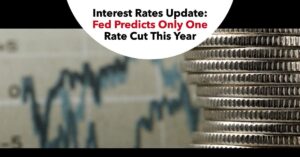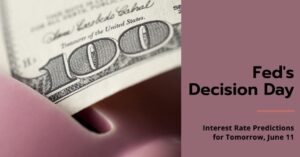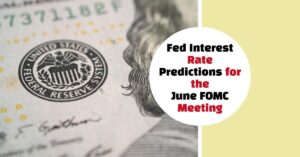The housing market can be a tumultuous landscape, but there are always regions that demonstrate resilience and stability. According to ATTOM's newly released Q1 2024 Special Housing Risk Report, certain areas in the United States are currently standing out as particularly robust against potential declines. While states like California, New Jersey, and Illinois show significant vulnerability, the South and Midwest are proving to be much less at risk.
High-Risk Regions
California, New Jersey, and Illinois have consistently shown the highest concentrations of at-risk markets. The first-quarter patterns reveal that these states accounted for 34 of the 50 U.S. counties most exposed to potential housing market declines. Notably, metropolitan areas such as New York City and Chicago, along with various inland regions of California, dominate the list of areas more prone to downturns.
The report highlighted that six counties in and around Chicago, five in the New York City metropolitan area, and 14 in various parts of California were among the 50 most vulnerable markets. These areas continue to struggle with gaps in home affordability, underwater mortgages, foreclosures, and unemployment.
Stable Housing Markets
Conversely, the least vulnerable markets are predominantly found in the South and Midwest. According to ATTOM’s Q1 2024 housing impact report, 22 of the 50 least at-risk markets are located in Virginia, Wisconsin, and Tennessee. Among these, four are in the Washington, DC metro area, and another four are in the Richmond, VA metro area.
In total, 24 of the counties deemed least vulnerable to housing market problems in the first-quarter report are in the South, while 19 are in the Midwest. Only four counties in the Northeast and three in the West made the list of least at-risk markets.
Top 10 Counties Least At-Risk
Here, we delve into the specifics of the ATTOM Q1 2024 Special Housing Risk Report to identify the top 10 U.S. counties that are least at risk of housing market declines:
1. Chittenden County, Vermont
Chittenden County stands out with 45.6% of income needed to buy a home, only 0.9% of properties underwater, a mere 0.01% of properties with foreclosure filings, and a low 1.4% unemployment rate as of May 2024. These factors contribute to its strong market stability.
2. Shelby County, Alabama
Shelby County benefits from its proximity to Birmingham, requiring 30.0% of income to buy a home, 3.7% of properties underwater, 0.03% foreclosure filings, and a 2.3% unemployment rate in May 2024, keeping it insulated from severe downturns.
3. Davidson County, Tennessee
Home to Nashville, Davidson County requires 35.1% of income to buy a home, has 4.0% of properties underwater, 0.01% with foreclosure filings, and a 2.5% unemployment rate in May 2024, making it a stable market.
4. Albemarle County, Virginia
With Charlottesville at its heart, Albemarle County requires 42.2% of income to buy a home, has 2.8% of properties underwater, 0.01% foreclosure filings, and a 2.2% unemployment rate in May 2024, providing strong market stability.
5. Henrico County, Virginia
Henrico County, part of the Richmond metro area, requires 36.2% of income to buy a home, has 2.8% of properties underwater, 0.03% foreclosure filings, and a 2.5% unemployment rate in May 2024, shielding it from major risks.
6. Brown County, Wisconsin
Brown County, encompassing Green Bay, requires 32.3% of income to buy a home, has 3.8% of properties underwater, 0.01% foreclosure filings, and a 3.0% unemployment rate in May 2024, reducing its susceptibility to housing market declines.
7. Sullivan County, Tennessee
Located in the Tri-Cities region, Sullivan County requires 21.7% of income to buy a home, has 4.0% of properties underwater, 0.04% foreclosure filings, and a 3.1% unemployment rate in May 2024, making it one of the least vulnerable areas.
8. Knox County, Tennessee
Knox County requires 33.8% of income to buy a home, has 2.7% of properties underwater, 0.04% foreclosure filings, and a 2.5% unemployment rate in May 2024, contributing to its housing market stability.
9. Sedgwick County, Kansas
As the economic center of Kansas, Sedgwick County, which includes Wichita, requires 21.3% of income to buy a home, has 5.3% of properties underwater, 0.01% foreclosure filings, and a 3.3% unemployment rate in May 2024, maintaining its market resilience.
10. Blount County, Tennessee
Blount County requires 37.8% of income to buy a home, has 2.9% of properties underwater, 0.03% foreclosure filings, and a 2.6% unemployment rate in May 2024, ensuring its position as a stable market.
These counties exemplify regions that are well-insulated from the typical fluctuations of the housing market. Strong local economies, diverse employment opportunities, and affordable housing options are key factors that contribute to their stability.
As the housing market continues to evolve, staying informed about the least at-risk areas can provide peace of mind and smart investment opportunities. By understanding these trends, homeowners and potential buyers can make better-informed decisions about where to invest and settle.
ALSO READ:
- Hottest Housing Markets Predicted for 2024
- Housing Market Predictions for Next 5 Years (2024-2028)
- Housing Market Predictions for the Next 2 Years
- Housing Market Predictions: 8 of Next 10 Years Poised for Gains
- Housing Market Predictions: Top 5 Most Priciest Markets of 2024
- Real Estate Forecast Next 5 Years: Top 5 Future Predictions
- Housing Market Predictions for 2027: Experts Clash on Forecast











